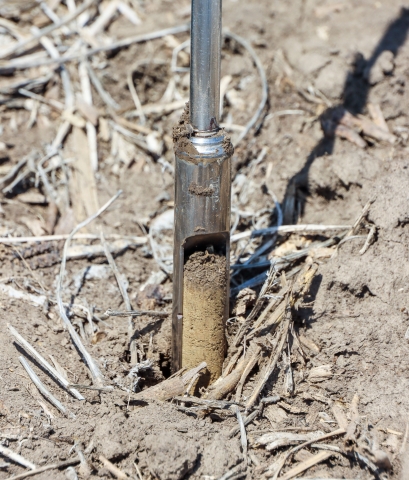Staff at the LLNRD have been working in the field collecting soil samples to a depth of 30 feet. This is a part of a project that began back in April 2023 in response to the continuing trend of increasing groundwater nitrate levels in parts of the District. A greater emphasis must be placed on reducing the amount of nitrate that is making it to the aquifer, so the LLNRD is collecting samples to determine how much is getting past the root zone.
Nitrogen fertilizers are an important resource for the agricultural community, but in some areas, the fertilizer is not entirely used up by the growing crop. When this happens, nitrate continues to migrate through the soil profile and ultimately ends up in the water table. The LLNRD has partnered with the United States Geological Survey, (USGS), to study the movement of nitrate and leaching in Platte, Nance, and Boone counties.
Three primary fertilizer application practices including fall fertilizer, manure application, and side dress application will be studied. To do this, soil samples will be collected to a depth of 8 feet throughout the growing season. Deeper soil samples will then be collected to a depth of 30 feet to see how much nitrogen has escaped the root zone and is no longer available to the crop. By sampling continually throughout the entire season, more understanding will be gained on how quickly nitrogen leaches through the soil profile.
A study focused in Water Quality Area 30, northeast of Columbus, will also investigate nitrate accumulation in the vadose zone, the area between the land surface and the aquifer. This project aims to create a leaching model that can simulate how nitrate moves in the soil and can estimate loading to vadose zone based on the specific farm management practices used.
Both projects are multi-year projects, so stay tuned for future articles and updates from the Lower Loup NRD.
